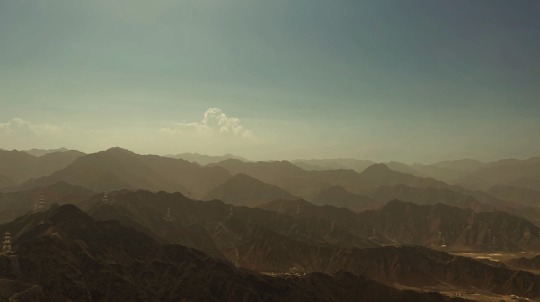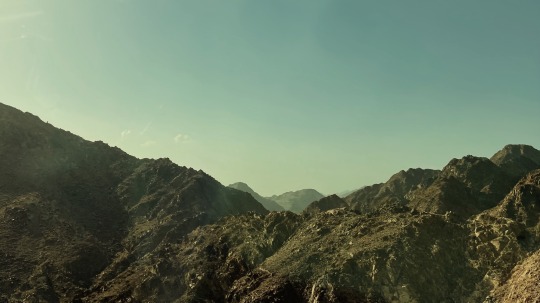#arab peninsula
Text
People online: Zionism is colonialism!! Stop eraseing the natives!
Genetic studies: umm. Well, actually -
I'm not biologist! But I try to explain this in simpler words. Feel free to correct me if I misunderstood anything :)
(can't believe I spent about 4 hours on it)
In short - the study compared the Y genes of several different groups - aka the paternal genetic history (father-to-son).
Finding more similarities= genetically closer= has a more common ancestry.
(like, brother is closer then cousin closer then a stranger)
Let's start!
"The investigation of the genetic relationship among three Jewish communities revealed that Kurdish and Sephardic Jews were indistinguishable from one another, whereas both differed slightly, yet significantly, from Ashkenazi Jews. The differences among Ashkenazim may be a result of low-level gene flow from European populations and/or genetic drift during isolation."
AKA: genetically speaking, there's no difference between Jews from various MENA countries (Mizrahim). (Sephardic were mostly Moroccan origins, Kurdish sample mostly north Iraq/Syrian origins)
An important note: Eda refers to the spesific traditions/subgroup, and passed down by the paternal line (father-to-son). This is in order to preserve traditional practices, that were different in different communities (e1)
There's a small genetic difference between Mizrahi jews and Ashkenazi Jews. This could be due to isolation or "low level gene flow" (in other words, converts and (mostly) children born from rape. Which was... way more common then you think. Look up "Pogrom".)
Next!
In a report published elsewhere, we recently showed that Jews and Palestinian Arabs share a large portion of their Y chromosomes, suggesting a common ancestry (Nebel et al. 2000). Surprisingly, in the present study, Jews were found to be even closer to populations in the northern part of the Middle East than to several Arab populations. It is worth mentioning that, on the basis of protein polymorphisms, most Jewish populations cluster very closely with Iraqis (Livshits et al. 1991) and that the latter, in turn, cluster very closely with Kurds (Cavalli-Sforza et al. 1994). These findings are consistent with known cultural links that existed among populations in the Fertile Crescent in early history.
Here, the mention earlier studies about genetic links between Jews (of all Edot) and Palestinian arabs. This can mean there's a common ancestry to the population (same grand-grand-etc.-father).
Jews are geneticly similar to Iranians, who are geneticly similar to Kurds (e2)
Those genetic links aren't suprising, and consistent with what we know from history about population and communities in the Fertile Crescent area.
Muslim Kurds
The Kurds are considered an ancient autochthonous population (Kinnane 1970; Pelletiere 1984) who may even be the descendants of the shepherds who first populated the highlands during the Neolithic period (Comas et al. 2000). Although Kurdistan came under the successive dominion of various conquerors, including the Armenians, Romans, Byzantines, Arabs, Ottoman Turks, and Iraqis (Kinnane 1970), they may be the only western Asian group that remained relatively unmixed by the influx of invaders, because of their protected and inhospitable mountainous homeland (Pelletiere 1984). The Y chromosome variation of Muslim Kurds falls within the spectrum observed in other populations (Turks and Armenians) living in the same region. The three populations are closer to Jews and Arabs than to Europeans. This is in good agreement with data on classical markers (Cavalli-Sforza et al. 1994). However, on the basis of mtDNA polymorphisms, Kurds were reported to be more closely related to Europeans than to Middle Easterners (Comas et al. 2000).
Kurds are very ancient ethnic group. Possibly the only western-asian group that remained relatively unmixed, despite (pointing history).
Kurds Y chromosomes are pretty similar to those in the same area (Turks and Armenians), and those three groups Y chromosomes are more similar to Jews and Arabs then to Europeans.
Now, that's interesting: the similarities is also in classical markers, but it's different from studies on mtDNA (Maternal/mother line), which then shows more similar to Europeans than Arabs and Jews.
(idk if there are rumours/historical kurds stories/traditions about Patriarch communities with brides from distance? Or Matriarch communities with grooms from the (other) distance? But it sounds like the historical story is something like that.
Palestinian Arabs and Bedouin
Bedouin are largely nomadic Arab herders, with a tribal organization. They live in all Arab countries, constituting about one tenth of the population (Cavalli-Sforza et al. 1994). The Bedouin population of the Negev desert was found to be most distant from Jews and Muslim Kurds and to be closely related only to Palestinians. Both these Arab populations differ from the other Middle Eastern groups sampled for the present study, mainly in having a higher frequency of Eu 10 chromosomes, the majority of which they share with each other. Traditional marriage practices—such as male polygamy, a high rate of consanguineous marriages, and patrilocality—may have enhanced the low haplogroup and haplotype diversity of the Negev Bedouin, as was suggested elsewhere for the Bedouin tribes in the Sinai Peninsula (Salem et al. 1996).
Bedouins from the Negev (Southern Israel) were most different from Jews and Muslim-kurds, and closely related to Palestinian Arabs. Both Arab groups were(geneticly) very similar to eachother, but different from the other Middle Eastern groups in the study.
The main difference was a higher frequency of Eu 10 chromosomes, that were similar in the 2 groups.
We propose that the Y chromosomes in Palestinian Arabs and Bedouin represent, to a large extent, early lineages derived from the Neolithic inhabitants of the area and additional lineages from more-recent population movements. The early lineages are part of the common chromosome pool shared with Jews (Nebel et al. 2000). According to our working model, the more-recent migrations were mostly from the Arabian Peninsula, as is seen in the Arab-specific Eu 10 chromosomes that include the modal haplotypes observed in Palestinians and Bedouin. These haplotypes and their one-step microsatellite neighbors constitute a substantial portion of the total Palestinian (29%) and Bedouin (37.5%) Y chromosome pools and were not found in any of the non-Arab populations in the present study. The peripheral position of the modal haplotypes, with few links in the network (fig. 5), suggests that the Arab-specific chromosomes are a result of recent gene flow. Historical records describe tribal migrations from Arabia to the southern Levant in the Byzantine period, migrations that reached their climax with the Muslim conquest 633–640 a.d.; Patrich 1995). Indeed, Arab-specific haplotypes have been observed at significant frequencies in Muslim Arabs from Sena (56%) and the Hadramaut (16%) in the Yemen (Thomas et al. 2000). Thus, although Y chromosome data of Arabian populations are limited, it seems very likely that populations from the Arabian Peninsula were the source of these chromosomes. The genetic closeness, in classical protein markers, of Bedouin to Yemenis and Saudis (Cavalli-Sforza et al. 1994) supports an Arabian origin of the Bedouin. The alternative explanation for the distribution of the Arab-specific haplotypes (i.e., random genetic drift) is unlikely. It is difficult to imagine that the different populations in the Yemen and the southern Levant, in which Arab-specific chromosomes have been detected at moderate-to-high frequencies, would have drifted in the same direction.
The eu10 Y chromosomes geneticly linked to the arab peninsula, and wasn't found in non-arab population. It's very possible that arab-Palestinians and Bedouins are the descendants of immigrants and population movement, possibly during the Caliphate - the Muslim Empire (Arab dynasties 632-1258; Mamluk Sultanate 1250-1517; ottoman/turkish 1517-1924) (e2)
Example and more information undercut:
Eda (plural - Edot): community, subgroup. Usually refers to a group using different Minhagim (traditions).
For example, my Yemeni ancestors only said the "Hamotzi" prayer (said before eating bread) during Passover, as wheat was rare and expensive, and wasn't a usual part of their diet.
Another differences include Te'amim (ways to read the Torah. Sort of like 🎶 for voice); Kitniyot (o lo lithiyot/jk) - do you eat it on passover? What about the oil?; certain holidays (traditional Mimuna, Sigd.) (Yat kislev🙈)
Through history, even though most Jewish communities weren't completely isolated from one another, it still took a lot of time to pass questions and information. So different places gained different traditions.
Basically, it goes "(go by) paternal traditions" (מנהג אבות)
In the past, people that moved from one community to another would take over the new traditions.
Since moving and immigration became far more common, and started to move as communities, people kept their traditions. For example, in my area I have 5 small synagogues, each was founded by a community from different diaspora that wanted to keep their traditions.
And it's okay! It's even great 😸
(e2) kurds:
Oh look, another ethnic group fighting for freedom and right for self government.
Population: about 30m ppl worldwide. In current geography, the land split between Iraq, Syria and Turkey. Also fighting ISIS. Look up YPJ.
#genetic studies#israel#palestine#genetics#genetic screening#kurdistan#kurds#muslim#jews#arab#arab peninsula#Palestinians#Bedouin#biology#history#fascinating#iraq#syria#turkey#YPJ#ncbi#peer review#science#biology study
16 notes
·
View notes
Text
At this point if you don't know anything about Arab colonization (as in done by Arabs, not to them) then maybe you shouldn't be commenting on a region you clearly know absolutely nothing about.
#Israel#israel hamas war#Arabs are indigenous to the arabian peninsula btw#not the rest of the mid east#so maybe if you're so against colonization you should reevaluate the side you're on#i stand with israel#proud israeli#am yisrael chai
65 notes
·
View notes
Text




المعمار النجدي في شبه الجزيرة العربية. 🐪🌴
Traditional Najdi (central Arabian) houses. 🌴🐪
#arab#arabian#khaleeji#middle east#saudi arabia#arabian peninsula#Arabian Gulf#arabic#Arab culture#Arab architecture#Culture#ethnic#mena#swana#heritage#tradition#عرب#العرب#شبه الجزيرة العربية#جزيرة العرب#الجزيرة العربية#الخليج العربي#الخليج#نجد#najd#Central Arabia#Eastern Arabia#east Arabia
5 notes
·
View notes
Text
A 6th century Christian monastery discovered in the UAE proves that Christianity’s presence in the region both pre-dated and overlapped with that of Islam.
#Islam#Christian#monastery#United Arab Emirates#Arabian Peninsula#ancient#ancient origins#history#archaeology news
62 notes
·
View notes
Text
Further reading:
Hyperallergic: The British Museum Isn’t Doing Enough to Fight Illegal Antiquities Trafficking, October 27, 2020
Hyperallergic: Sale of Possibly Looted Yemeni Objects Raises Red Flags, November 6, 2022
#Smithsonian#National Museum of Asian Art#Yemen#Yemeni#war#arabian peninsula#art#art history#conservation#repatriation#Hyperalleric#news#art world#museums#Morris Khouli#Mousa Khouli#Egypt#Arab Spring#us state department#TimeLine Auctions#archaeology#United Arab Emirates#Saudi Arabia#British Museum#colonialism#National Museum of Afghanistan#Iraq#Afghanistan
12 notes
·
View notes
Text
Look if you want to take a shot at France/Europe for colonization and slavery in order to explain why Argentina is a more deserving country to win the WC. We're gonna have to open the book on Persian and Arabic countries for literally massacring Africans centuries before europeans and on Argentina for hiding a shitload amount of Nazis after WWII.
What do you mean you don't wanna open that book ? Awww...
#france nt#if we're going back in history we should do it plain and right or not do it at all#the arabic peninsula and middle east are historically the biggest enslaving pricks#qatar didn't even stop enslaving people to this day
19 notes
·
View notes
Text
.
#a handful of my relatives are currently in the middle east / arabic peninsula right now#and i am scared shitless for them#(and their own relatives there)
2 notes
·
View notes
Text
‘Don’t say colonised, we annexed their land into our state’
Dude…
#don’t mind me but this is a TikTok comment on something about al Andalus and just wtf#seriously wtf I’m not angry or anything just baffled by their logic because the Iberian peninsula was pretty much colonised lol#the arabs/amazigh came in and killed pagans and then forced christians and Jews aka the natives to pay humiliating taxes#aka the jizya simply so that they wouldn’t be killed for existing as non-Muslims as they’d done to the pagans#+ they also had to pay higher taxes on their land than Muslims and they were forbidden from occupying positions of more importance#+ they enslaved Christian women 24/7#literally there’s a tower in the Alhambra named ‘of the captive’ because that’s where a famous Christian-slave-turned-sultan’s-wife was kept#(and btw she wasn’t happy because the moment her husband died she changed her name back to her original one and went back to being a#Christian in Castile)#also about al andalus let’s not forget that Jews were literally forbidden to wear any colour but yellow#so that they could be easily identified like a certain moustached guy once did#AND THE ALMOHADS GENOCIDED CHRISTIANS AND JEWS LOOK IT UP#anyways#the Spanish empire the Spanish Inquisition etc weren’t good#ik that#but it’s not difficult to acknowledge that atrocities can happen both ways and that a past colonial power was bad even though the new#colonial power is also bad and perhaps even worse#like if I ever go to Mexico I’m not going to go around telling people they should be happy we colonised the#because the aztecs were also a supreme piece of shit#history is complex idk why people are so patriotic over medieval empires lol#might delete later lol
17 notes
·
View notes
Text




from desert (through mountains) to the sea
#personal photography#arabian sea#arabian peninsula#united arab#camel#hajar mountains#mountains#ocean#travel
10 notes
·
View notes
Text
its sad how many people don't know that arabic, arabian, and arab are three different words that do not mean the same thing
#stfu kory#arabic is a language people cannot *be* arabic#arab just refers to any country that primarily speaks arabic - ex; egypt lebanon jordan etc#arabian refers to the countries in the arabian peninsula within the larger arab region#saudi arabia uae oman etc#they are different words begging people to just google it rq
2 notes
·
View notes
Text
“taking the colonisers out” and then its a country that invaded and occupied the iberian peninsula and a few other southern european countries for well over 700 years
#i rock with morocco let me take the opportunity to talk about history i love history#the iberian peninsula was actually called al-ándalus during that time period#portugal specifically was “gharb al-ándalus”#literally many of our words and place’s names especially in the south have arabic origins#many words starting with al- for example#also the word olá comes from wa Allah ! the more you know. i think its very interesting#and oxalá comes from in sha’Allah which i hope im writing correctly#one of the most crucial periods of our history is the reconquista#during which the portuguese took back most of the territory that currently makes up the country#also don’t get me wrong i was very much rooting for morocco when they played against spain.#one thing abt me is i will always pray on spain’s downfall#…who also invaded us from god knows how long#for*#we were under spanish rule for uhhhh 80 or 90 years if im not mistaken#we literally just had a national holiday that is the day of independence (from spain)💀 1st of december#don’t take any of this as hateful im just talking about an interesting period in portuguese history here#wc aside 😭😭😭#the only countries that i actively hate on are the us france and spain honestly#(we were also invaded by france fun fact. 3 times.)
3 notes
·
View notes
Text




The mountains of Jazan region in southern Saudi Arabia. 🇸🇦
جازان، جنوب المملكة العربية السعودية. 🇸🇦
#middle east#arab#arabian#saudi arabia#khaleeji#جازان#جنوب السعودية#South Saudi Arabia#southern Saudi Arabia#southern Saudi#South Saudi#jizan#jazan#arabic#arabian peninsula#arabia#nature#mountains#عرب#شبه الجزيرة العربية#الجزيرة العربية#جزيرة العرب#المملكة العربية السعودية#السعودية#ksa#العرب
2 notes
·
View notes
Text
just so you know, my arabic teacher said today that the lebanese are the cordubans of the arab world and the iraqis the catalan
#he was talking about accents not politics btw#i always love learning about all the dialects of arabic i find them fascinating#also he said the moriscos that STILL LIVE IN NORTHERN MOROCCO have their own distinct dialect derived from 'hispanic arabic' (?)#idk what the technical name is#but that's so cool!!!#for anyone who doesn't know moriscos were the muslims that lived in spain after the reconquista#they were descendants of the moors of al-andalus#and they were expelled out of the peninsula in 1609 it was a big deal we study in history class
7 notes
·
View notes
Text
The Hidden Text of the Sanaa Manuscript: A Prototype Quran? - Historic Mysteries
https://www.historicmysteries.com/sanaa-quran/

View On WordPress
#1972#1979#1989#2012#2017#578 AD#632 AD#646 AD#650 AD#669 AD#7th century#8th century#Allah#Arabian Peninsula#Arabic#bible#Bismillah#Great Mosque of Sanaa#Hejazi#Hijazi Script#Islam#Jesus#Mecca#Medina#Minarets#Moses#palimpsest Quran#PBUH#Prophet Mohammed#Prototype Quran
1 note
·
View note
Text
youtube
Explore the fascinating world of Pre-Islamic Arabia with our latest YouTube video! Dive into the rich history of the Arabian Peninsula, where ancient Arab civilization, nomadic lifestyles, and unique desert environments shaped a crossroads of civilizations. Discover the historical Arab culture, interactions with Romans and Persians, and the rise of Islam led by Prophet Muhammad. Join us on this journey through Arabian heritage, cultural transformations, historical poetry, and the intriguing artifacts that tell the tale of this captivating era.
Lost Islamic History Series Ep 1: A Short Journey Through Pre-Islamic Arabia
#Pre-Islamic Arabia#Arabian Peninsula history#Ancient Arab civilization#Nomadic lifestyle#Arab tribes#Historical Arab culture#Ghassanids#Lakhmids#Kingdom of Aksum#Rise of Islam#Prophet Muhammad#Islamic history#Arabian heritage#Early Islamic civilization#Islamic Golden Age#Islamic empires#Islamic conquests#Islamic caliphates#Islamic culture#Islamic dynasties#Islamic expansion#Islamic theology#Islamic caliphs#Islamic heritage#Islamic historical figures#Youtube
1 note
·
View note
Text

Dubai Camel Ride
A camel ride in Dubai is a popular tourist activity that allows visitors to experience a traditional mode of transportation used by the people of the Arabian Peninsula for centuries. Dubai, being a city in the United Arab Emirates (UAE), offers a unique opportunity for tourists to enjoy camel rides in a desert setting, creating an authentic and memorable experience.
#Dubai Camel Ride#Tourist Activity#Traditional Transportation#Arabian Peninsula#United Arab Emirates (UAE)#Desert Setting#Tour Operators#Dune Bashing#Sandboarding#Bedouin-style Camp#Desert Landscape#Scenic Views#Sand Dunes#Desert Experience#Tour Packages
1 note
·
View note